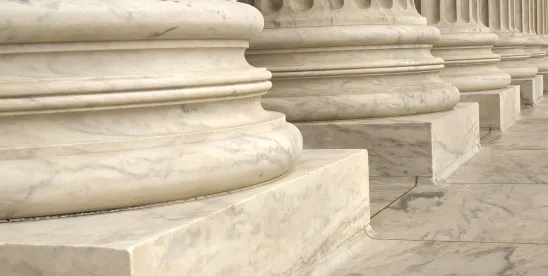On 9 May 2024, the US Supreme Court (the Court) held that there is no three-year limit on monetary damages for timely filed copyright infringement claims. The 6–3 decision resolves a circuit split, opens the doors to larger potential damages awards for plaintiffs, is likely to lead to increased litigation over older infringements, and leaves open the question of whether the “discovery rule” applies to copyright infringement claims. Warner Chappell Music, Inc. v. Nealy, No. 22-1078, 601 U.S. – (2024).
In the case, Sherman Nealy brought copyright infringement claims against Warner Chappel Music. The Copyright Act provides that a plaintiff must file suit “within three years after the claim accrued.” 17 U. S. C. §507(b). Importantly, the majority assumed without deciding that the “discovery rule,” under which claims accrue when they are discovered, applied to Nealy’s claims. The majority repeatedly emphasized that the question of whether the discovery rule applies, or whether copyright infringement claims properly “accrue” at the time of infringement in the absence of fraud or concealment (no matter when they are discovered), was not properly before the Court. The majority thus assumed that Nealy’s claims were timely because they were brought within three years of his discovery of the infringement, even though the infringing acts occurred up to ten years before Nealy filed suit.
The majority held that the Copyright Act’s three-year “time-to-sue prescription” establishes no separate three-year period for recovering damages. Thus, because Nealy’s claims were timely filed under the discovery rule, Nealy may obtain damages for all infringing acts, including acts that occurred more than three years prior to his filing suit. Justice Kagan wrote the majority opinion, joined by Chief Justice Roberts and Justices Sotomayor, Kavanaugh, Barrett, and Jackson.
The three dissenting Justices criticized the majority’s approach, writing that the discovery rule “almost certainly does not” apply to copyright infringement claims, and stating that the Court should have either squarely addressed the discovery rule’s applicability or dismissed the case “as improvidently granted and awaited another squarely presenting the question.” Justice Gorsuch wrote the dissenting opinion, joined by Justices Thomas and Alito.
Warner Chappel opens the doors for plaintiffs to recover significant damages for infringement that occurred many years or even decades ago. However, the long-term impact of Warner Chappel is tied to the uncertain fate of the discovery rule.
If in a future decision a majority of the Court holds that the discovery rule does not apply to copyright infringement claims, as at least the three dissenting Justices seem prepared to do, then the Copyright Act’s three-year “time to sue” prescription will effectively become a three-year limitation on damages. Indeed, there is a pending petition that asks the Court to directly consider “whether the ‘discovery rule’ applies to the Copyright Act’s statute of limitations in civil claims.” See Petition for a Writ of Certiorari, Hearst Newspapers, L.L.C., et al. v. Antonio Martinelli, No. 23-474 (Nov. 2, 2023).
It remains to be seen if the Court will grant certiorari and take up this question in its next term.






 />i
/>i
